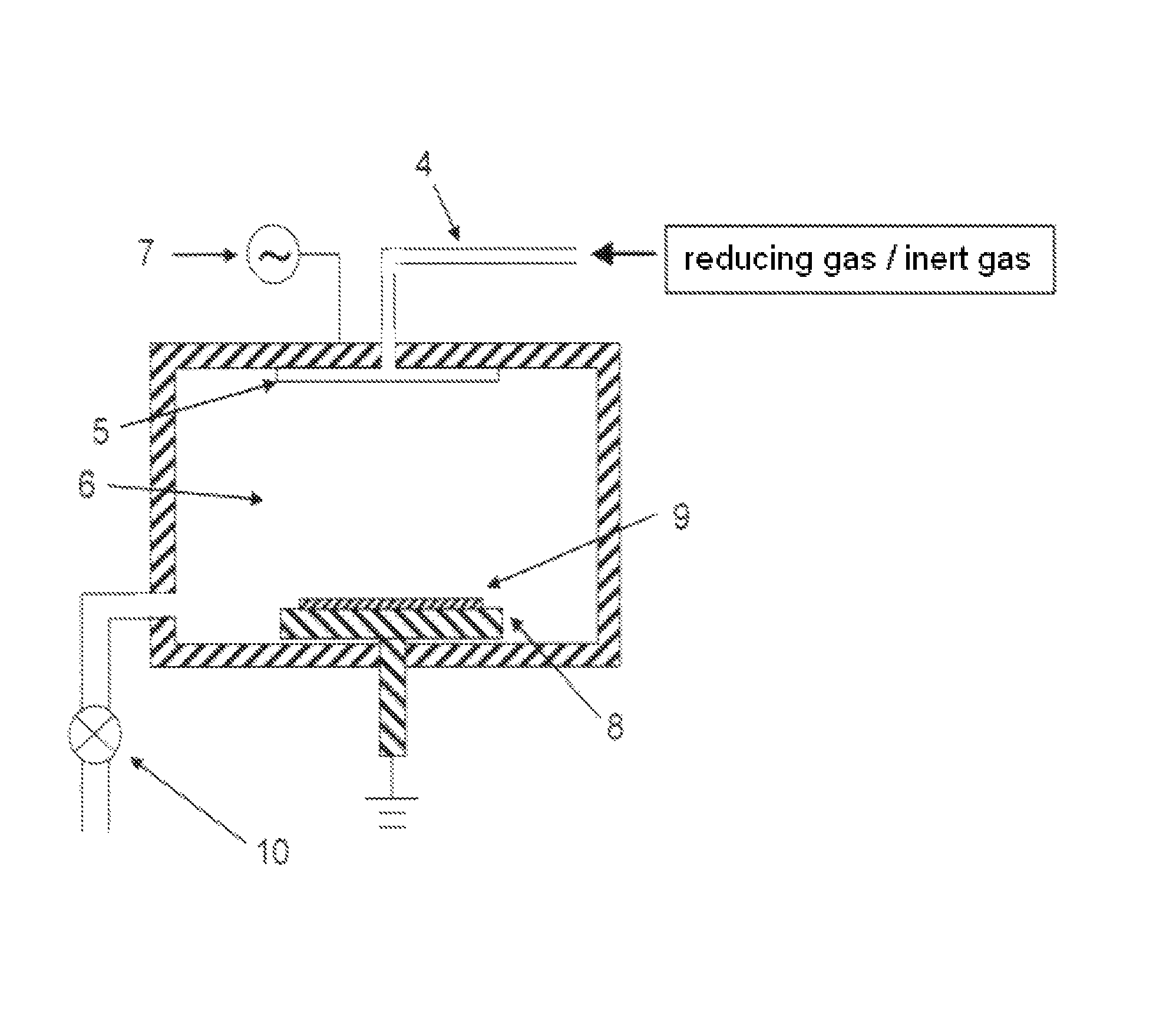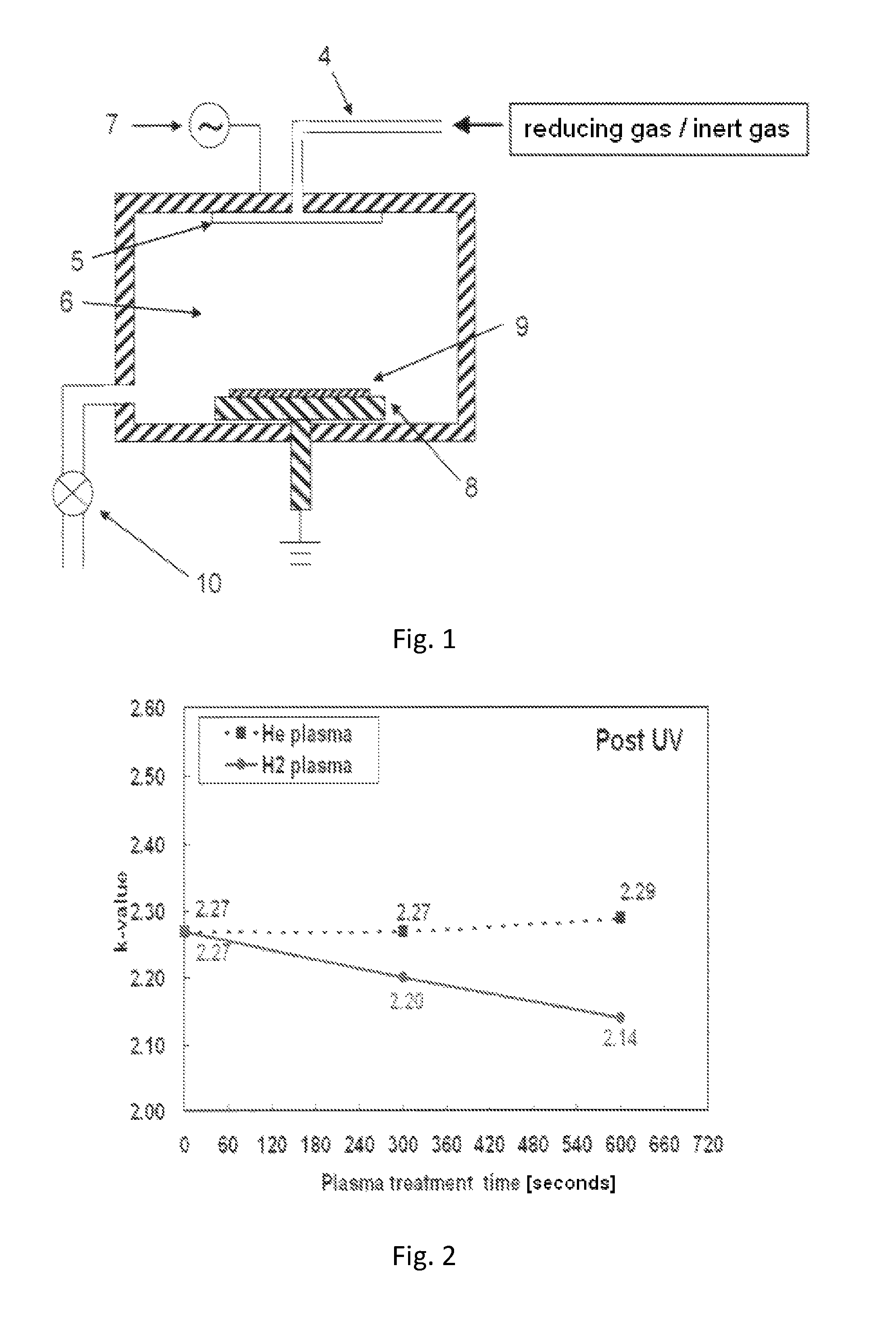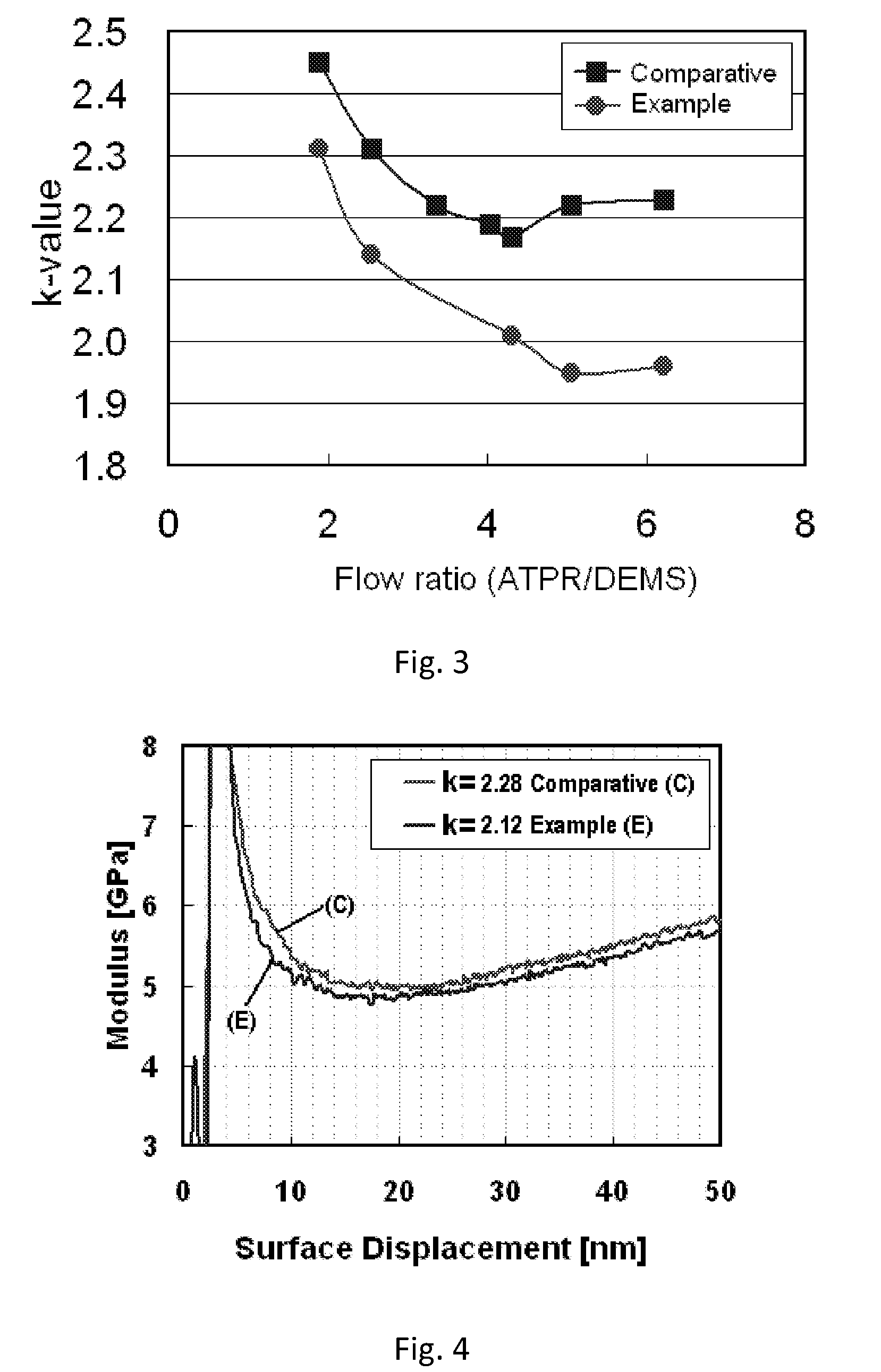Method for reducing dielectric constant of film using direct plasma of hydrogen
a technology of dielectric constant and direct plasma, which is applied in the field of reducing the dielectric constant of films, can solve the problems of increasing electricity consumption, increasing the degree of film shrinkage, and unable to maintain the mechanical strength of films, so as to achieve low dielectric constant and maintain mechanical strength.
- Summary
- Abstract
- Description
- Claims
- Application Information
AI Technical Summary
Benefits of technology
Problems solved by technology
Method used
Image
Examples
example 1
[0051]Using a reaction chamber for plasma enhanced CVD illustrated in FIG. 1, a film having a thickness of 250 nm was deposited on a 300-mm wafer under the following conditions:
[0052]Temperature: 250° C.;
[0053]Pressure: 800 Pa;
[0054]He: 900 sccm;
[0055]O2: 25 sccm;
[0056]DEMS: 53.4 sccm to 126.8 sccm;
[0057]ATPR: 236.8 sccm to 309.1 sccm;
[0058]HRF: 1,000 W;
[0059]Distance between the showerhead and the susceptor: 8 mm.
[0060]UV-curing was conducted in a UV radiation chamber for 5 minutes at 400° C. under a pressure of 665 Pa while introducing N2 at 4,000 sccm, using a UV power of 100 W / cm.
[0061]Direct plasma treatment was conducted for 10 minutes in the same reaction chamber as film deposition, after the UV-curing, under the following conditions:
[0062]Temperature of Substrate: 250° C.;
[0063]Pressure: 40 Pa;
[0064]Hydrogen Gas Flow: 300 sccm;
[0065]RF Power (13.56 MHz): 400 W;
[0066]Distance between the showerhead and the susceptor: 8 mm.
[0067]As a comparative example, the same processes as ...
example 2
[0068]Using an apparatus for plasma enhanced CVD illustrated in FIG. 1, a film having a thickness of 250 nm was deposited on a 200-mm wafer under the following conditions:
[0069]Temperature: 250° C.;
[0070]Pressure: 800 Pa;
[0071]He: 900 sccm;
[0072]O2: 25 sccm;
[0073]DEMS: 105.1 sccm;
[0074]ATPR: 263.1 sccm;
[0075]HRF: 1,000 W;
[0076]Distance between the showerhead and the susceptor: 8 mm.
[0077]UV-curing was conducted in a UV radiation chamber for 5 minutes at 400° C. under a pressure of 665 Pa while introducing N2 at 4,000 sccm, using a UV power of 100 W / cm.
[0078]Direct plasma treatment was conducted for 10 minutes in the same reaction chamber as film deposition, after the UV-curing, under the following conditions:
[0079]Temperature of Substrate: 250° C.;
[0080]Pressure: 30 Pa;
[0081]Hydrogen Gas Flow: 100 sccm;
[0082]RF Power (13.56 MHz): 100 W;
[0083]Distance between the showerhead and the susceptor: 11 mm.
[0084]The dielectric constant of a film upon the UV-curing was 2.28, and it was reduce...
examples 3 and 4
[0085]The same processes were conducted as in Example 2 except the conditions shown in Table 1 below:
[0086]
TABLE 1H2RFTemperaturePressureFlowpowerGapIVH2 plasmaEx.[° C.][Pa][sccm][W][mm]k-value[A / cm2]treatment225030100100112.28→2.123.4E−8→2.2E−9Post-UV325030100100112.41→2.311.2E08→3.8E−9Post-UV42505020040082.17→1.961.3E−8→1E−9Pre-UV
[0087]As shown in Table 1, in Examples 2-4, the dielectric constant of the films were reduced by at least 0.1, and the leakage current was reduced nearly by one digit.
PUM
| Property | Measurement | Unit |
|---|---|---|
| pressure | aaaaa | aaaaa |
| temperature | aaaaa | aaaaa |
| thickness | aaaaa | aaaaa |
Abstract
Description
Claims
Application Information
 Login to View More
Login to View More - R&D
- Intellectual Property
- Life Sciences
- Materials
- Tech Scout
- Unparalleled Data Quality
- Higher Quality Content
- 60% Fewer Hallucinations
Browse by: Latest US Patents, China's latest patents, Technical Efficacy Thesaurus, Application Domain, Technology Topic, Popular Technical Reports.
© 2025 PatSnap. All rights reserved.Legal|Privacy policy|Modern Slavery Act Transparency Statement|Sitemap|About US| Contact US: help@patsnap.com



